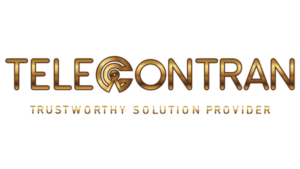Refreshing Telecommunications Fundamentals
3 DAYS
INSTRUCTOR LED WORKSHOP
“OUR COURSES CAN BE SPECIALLY TAILORED TO ADDRESS YOUR REQUIREMENT – TELECONTRAN”

COURSE OBJECTIVES
With the development of solid state electronics and its application to digital processing, telecommunication has become extremely important to large segments of global business. From a relatively stable, mature industry, telecommunication has rapidly become a technology-driven marketplace in which a host of companies are competing for customer attention with new services and equipment. The speed at which modern communication technology has been embraced and spread has connected the world in ways that were inconceivable at the start of the twenty-first century—just two short decades ago. The leap from the invention of the telephone, to the mobile phone, to the smartphone, not only changed the way we communicate but also the way we understand the world and how we operate within it.
Refreshing Telecommunications Fundamentals is a comprehensive 3-day workshop covering all important aspects of Telecom Networks, applications and services that a professional needs to know. The workshop provides an excellent grounding in telecommunications, with the basics presented in clear and easy to understand format.
After successful completion of this 3 day workshop, participants will be able to
- Understand the evolution of Telecommunications and the global trends in the telecom developments.
- Understand mainstream wire line and wireless technologies and applications.
- Understand the key differences among various transmission media and their associated transmission system as well as modern and future generation satellite communication.
- Explain the fundamental concepts of Data Communications and IP Networking along with technologies such as, IPv6, VoIP, SIP, MPLS, Carrier Ethernet etc.
- Explore voice, data and video convergence along with Triple Play and Quad Play
- Comprehend the Cellular networking systems as well as other wireless radio system applications, such as 2G/3G/4G/5G/6G, Wi-Fi, DWDM, IoT etc.
COURSE CURRICULUM
This program is designed for professionals who are working in the telecom industry. At the same time, anyone who is interested to have knowledge in basic telecommunications can attend this course.

What is Telecommunication?
- Evolution and Telecom History
- Its Uses, Service and Application
- System Architecture
- Telecom Standardization
- Telecom governing bodies
Signals and Signaling Concepts
- Communication System
- Analog and Digital Signal
- Basic Concepts of Signals: Amplitude, Frequency, Phase, Period, Wavelength
- Channels and Bandwidth
- Modulation
- PCM – Pulse Code Modulation
- Multiplexing
- Signal to Noise Ratio
- Encryption
Telecom Network Basics
- Communication System
- Frequency Spectrum
- Switching Systems
- Signaling Systems
Transmission System
- PDH / SDH
- SONET
- EoS (Ethernet over SDH/SONET)
- DWDM
- OTN
Transmission Medium
- Cable – Copper Cable
- Types of Copper Cable
- Radio
- Microwave Transmission
- Fiber Optics
- Components and Modes of Fiber Optics
- GPON and FTTx
- BPON, GPON and EPON
- Submarine Cable
Satellite Communications (SATCOM): Modern and Future Network Solution
- VSATs and Applications
- Satellite orbits – GEO, LEO, MEO, HEO
- Inmarsat, Thuraya, Iridium, Globalstar
- Frequency Bands (L-Band, C-Band, X-Band, Ku-Band, Ka-Band and more)
- Satellite Communication Segments
- Future of Satellite Communication
- 5G Non-Terrestrial and Beyond 5G Non-Terrestrial Network
- Satellite Internet Constellations
- Satellite-to-Mobile Connectivity
OSI – Open System Interconnection
- Analogy of OSI
- Peer to Peer Processes
- OSI 7 Layers
Modern Broadband Communications
- Standard Ethernet
- FAST / Gigabit / 10 Gigabit Ethernet
- 40/100 Gigabit Ethernet
- Terabit Ethernet
- Future Broadband Communication – BAN, PAN, LAN and NAN Technologies
- ESS, PBSS, and IBSS LANs
- 6LoWPAN
WiFi
- WiFi Certification and Standards
- WiFi Radio Spectrum
- Wi-Fi 5 (802.11ac)
- Ad hoc WiFi
- Long Range WiFi
- WiFi Securitys
- LiFi
- Super WiFi
- Wi-Fi 6 (802.11ax)
- Wi-Fi 6E (6 GHz)
The Internet and Internet Protocol
- Evolution of Internet
- Internet vs. Intranet
- TCP/IP Protocol suite
- IP Addressing
- IP Classes
- IPv6
- IPv4 vs IPv6
- Routing
- Domain Name System (DNS)
- Internet Security
- Firewall
Cloud Computing
- What is a Cloud
- History and Evolution of Cloud
- Cloud Servicing Models
- Cloud Deploying Models
- Advantages and Challenges of Cloud
- Cloud Providers
Data Center
- Data Center Overview
- Data Center Architecture
- Data Center Services
- SDN/NFV
Digital Broadcasting System
- Digital Video Broadcasting (DVB)
- Cable TV (CATV)
- Hybrid Fiber-Coax (HFC) Systems
- IPTV
- OTT
IP Telephony
- SIP
- Voice over IP (VoIP)
- VOIP Call Flows
- SIP/RTP
- MGCP/MEGACO
- SIGTRAN
MPLS
- MPLS Architecture
- MPLS VPN
- GMPLS
- VPLS
- MPLS-TP
- Relationship between MPLS and ATMs
Fixed and Cellular Network
- PSTN and ISDN
- Network Evolution
- Network Architecture
- Radio Frequency and Frequency Reuse
- Base Station Subsystem
- Cell Planning
- Handover
- Transmission and Transmission Channels
- Core Network and OSS
- Billing – Prepaid and Postpaid
- Roaming
- Revenue Assurance
- Subscriber Identity Module (SIM)
- Messaging Techniques – SMS, MMS
2G to 2.5G/2.75G Network
- GSM Network – GSM Carrier Frequency and Network Architecture
- GPRS / EDGE Network Architecture
- Protocols supported over GSM
- Difference between GPRS and EDGE
- Benefits of EDGE over GPRS
UMTS / WCDMA and HSPA / HSPA+
- UMTS / WCMA Principles
- Network Architecture
- UMTS / WCDMA Services
- UMTS Frequency Bands
- UTRAN
- UMTS Core Network
- Network Migration from GSM/GPRS to UMTS
- HSPA Network Overview
- Benefits of HSPA over UMTS
- Evolution to HSPA+
LTE and 4G Network
- LTE Terminology
- Network Architecture
- LTE Spectrum
- LTE TDD and LTE FDD
- LTE EPC
- IMS
4.5G
- Meaning of 4.5G
- Difference between 4G and 4.5G
- LTE-Advanced
- MIMO
5G
- 5G Drivers
- Objectives of 5G
- 3GPP 5G Architecture
- 5G SA and NSA
- 5G Internet
6G
- 5G Advanced: Evolution towards 6G
- 6G Fundamentals
- 6G Use cases (including 6G business cases)
- 6G devices and initiatives
M2M – Machine to Machine (M2M) and Internet of Things (IoT)
- M2M Applications
- IoT Network Architecture
- IoT Applications
- Enabling technologies for IoT
- NB-IOT, LPWAN, LoRaWAN, SigFox
- Government regulations on IoT
- IoT Security
Convergence of AI/ML/DL in Modern Network Infrastructure
- Applications of AI/ML in Modern Telecommunications
- AI adoption obstacles
- Deep Learning in Telecom
- Generative AI Models
- Generative Adversarial Networks (GANs)
Cybersecurity and Blockchain
- Importance of cybersecurity
- Challenges in cybersecurity
- Security Threats
- Blockchain in Telecom industry
Wireless Radio System Applications
- Public Mobile Radio (PMR) and Public Access Mobile Radio (PAMR)
- Terrestrial Trunked Radio Access (TETRA)
- Remote Terminal Unit (RTU)
- Near Field Communication (NFC)
- ZigBee
- Home Automation – Smart Home
Case Studies
- Challenges for Mobile Network Operators
- Quad-Play: Modern Telecom Service Trend
TRAINING/WORKSHOP | DURATION | TRAINING DATE | LOCATION |
Refreshing Telecommunications Fundamentals | 3 Days | 8 - 10 Dec 2025 | Bandar Seri Begawan, Brunei Darussalam |
OUR HAPPY CLIENTS
WHAT OUR CLIENTS SAY ABOUT TELECONTRAN !!
The workshop is full of technical information and terms and in-depth knowledge about telecommunications.
This workshop gave me a good understanding on communications concepts, signaling system and new and upcoming telecom technologies.
All the telecommunication concepts are well explained and learnt new technologies like 5G, IOT, M2M etc.
I like to know about the latest Telecom technology that have been clearly explained by the instructor.
This workshop truly covered all aspects of telecommunication from beginning to its evolution and present and future state.

